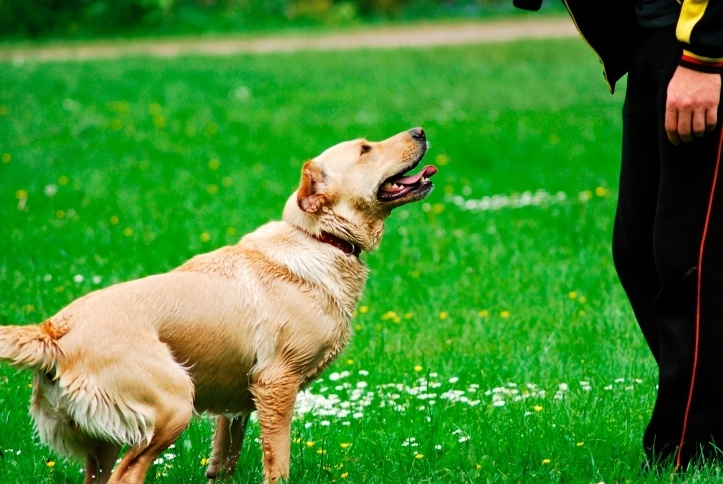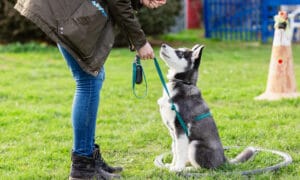“This post contains affiliate links, and I will be compensated if you make a purchase after clicking on my links.”

Would you expect your baby’s first steps to be as fast as Olympic gold medalist Usain Bolt?
Would you expect your 16 year old son’s first driving experience to be on a busy highway at 5:30 p.m.?
Would you expect someone to be fluent in a new language after only 1 day on vacation in a foreign country?
These may sound like outlandish examples, but they are no different than owners who expect their dog to…
– “Come” when off-leash in the woods chasing a deer (without first teaching them on-leash in the yard with no distraction).
– Remain in a “Down Stay” when the doorbell rings and guests enter the home (without first training them to do a “Down Stay” without distractions).
Just like any other aspect of our life, dog training needs to be appropriately progressive. Proper progression makes training fair to your dog and ensures success. If you skip steps and rush the training process, you and your dog will end up frustrated, stressed, and unsuccessful.
Every training system needs a beginner, intermediate, and advanced phase. In conjunction with these three phases, you need to iron out the issues of contextualizing vs. generalizing, and implement a predictable command sequence (consistent use and order of verbiage).
It’s imperative to teach your dog using a proven method of training that works with all dogs, regardless of breed, age, or size.
Steve Reid is a Certified Dog Trainer and owner of S.R. Dog Training in Somers, NY. For more information about S.R. Dog Training, visit www.srdogtraining.comorwww.facebook.com/SRDogTraining.























